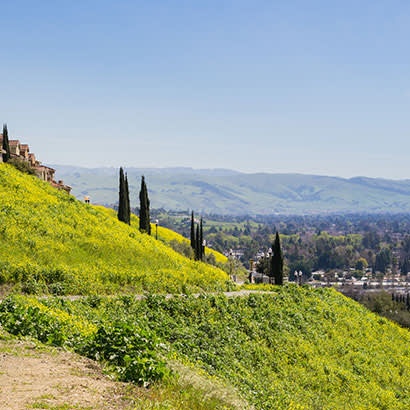
For an enhanced digital experience, read this story in the ezine.
In 1989, the President’s Commission on Americans Outdoors recommended the nation develop a system of recreational corridors: “Fingers of green that reach out from and around and through communities all across America.” They called for a “prairie fire of local action” to implement the vision. Three factors came together to create a “perfect storm,” which ignited that vision.
First, Congress was concerned the dramatic contraction of active rail lines from their peak of 254,251 miles in 1916 to 141,000 miles by 1980 was resulting in a loss of land corridors — which preempted any future reactivation that may be desired for military or mass transportation purposes. Consequently, in 1983 to preserve the corridors for potential future transportation uses, Congress amended section 8(d) of the National Trail Systems Act (often called the Railbanking Act or the Rails-to-Trails Act) to preserve established railroad corridors for interim trail and future rail use. This legislation spurred an extraordinary surge in trails.
The lack of funding needed to compensate adjacent landowners and to pay for the cost of transitioning rail line beds to hike-bike trails was a barrier to realizing the potential of the railbanking provision. The second element in the “perfect storm” was the 1992 federal Transportation Bill. This included a component that funded nontraditional projects that enhanced the existing transportation infrastructure. The funds provided up to 80 percent of the cost of a project, so local and state entities were required to finance only 20 percent of the cost. This offered a strong incentive for local trail initiatives. Similar enhancement funding has been included in every subsequent Transportation Bill.
The third factor emerged in the last quarter of the 20th century, when Americans became much more aware of the importance of exercise in maintaining good health. During the 1970s and 1980s, 25 million Americans took up running while many more engaged in regular walking. The most recent survey by the National Association of Homebuilders reported that walking/jogging trails ranked third or fourth among all homebuyer age groups as most desired local amenities on a list of 19. This reflects the growing prominence of trails in both the commuting and leisure dimensions of people’s lives.
Gauging Property Owners’ Perceptions
For the most part, the rationale underlying the proposition that trails and greenways may positively influence property values differs from that associated with parks. Unlike parks, any added property value is not likely to come from the views of nature or open space that a property owner enjoys, because in many cases, especially in urban trail contexts, there are no such vistas. Rather, any added value derives from access to the linear trail. It is a trail’s functionality or activity potential that is likely to confer added value, not the panorama of attractive open space.
In a recent article published in the Journal of Park and Recreation Administration, Sarah Nicholls, a professor in the department of business at Swansea University’s School of Management, and I reviewed findings of studies that evaluated the impact of trails on property values. Those conducted in the 1980s and 1990s relied on responses to surveys by people living next to trails.
Typically, they were asked two questions. First, did the trail increase or decrease their property’s value? Opinion surveys from the 10 urban studies addressing this question reported that among 2,647 households residing proximate to 24 urban trails, only 6 percent perceived trails had a negative impact on their property. In contrast, 47 percent believed the trail increased their property’s value.
Among the 1,212 proximate property owners along eight primarily rural trails, most perceived the trail did not influence their property’s value. Again, only 6 percent reported a decrease, but the proportion perceiving an increase was much lower than along the urban trails (16 percent compared to 47 percent).
These findings were important because they strongly suggested that exposure to a trail after it has been open for a number of years led those most impacted to conclude that fears of negative financial repercussions associated with a trail are generally without merit.
Second, was the property likely to sell more quickly or more slowly because of its proximity to the trail? Responses were reflective of those to the first question. Among those residing proximate to urban trails, 62 percent perceived a sale would be faster and 8 percent slower, while the rural residents’ responses were 29 percent faster and 9 percent slower.
Analyzing the Data
This approach had three obvious limitations. First, responses were subjective best guesses given by homeowners who, in many cases, had given little or no thought to the issue, and whose answers were not informed either by personal experience with recent market transactions or by knowledge of comparable sales transactions. Second, the sample sizes of these studies were small. Third, only one of the 18 studies appeared in a refereed journal, which means they may not possess the rigor that is expected in peer-reviewed social science research.
The emergence of much more advanced electronic technology in the late 1990s enabled these issues to be addressed by using more sophisticated research and statistical processes, and databases comprised of sales transactions. We identified 20 studies that investigated the impact of trails on residential property values. The results indicated that a small positive premium of between 3 percent and 5 percent was the most widespread outcome for a single-family home located next to a trail. However, there were outliers that suggested the premium might be as high as 15 percent in some cases, while in other contexts there may be a small negative impact.
John L. Crompton, Ph.D., is a University Distinguished Professor, Regents Professor and Presidential Professor for Teaching Excellence in the Department of Recreation, Park and Tourism Sciences at Texas A&M University and an elected Councilmember for the City of College Station.

